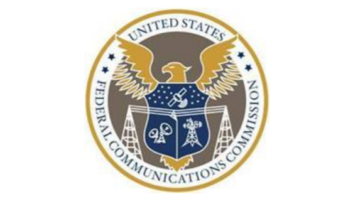
The Federal Communications Commission has finalized the 2016 regulatory fees your radio station will have to pay this month. Fees will increase for many stations in the biggest U.S. markets, and for all FMs, though a few AM categories declined, and the commission scaled back some planned increases in the smallest communities. Meanwhile broadcasters in Puerto Rico were unsuccessful at asking for fee relief.
The commission plans to collect $384 million overall in regulatory fees from various sectors it regulates; it estimates that about $134 million of that total, 35%, will come from entities regulated by the Media Bureau.
We told you in June about proposed changes in the radio station fee grid. Among other things, the FCC said then that it wanted to make broadcast fees more “rational” by ironing out inconsistencies; it also added a row to the AM and FM table for stations in areas with more than 6 million people.
The final grid has been tweaked slightly since then and is seen at top right. Last year’s fees are shown below right for comparison. This lets us see that, for instance, an FM Class B station in the largest market that paid $12,025 last year will now pay either $13,750 or $17,175, depending on population served (for the station in the new 6 million-plus category, that is a 43% increase), while an AM Class D in the smallest market that paid $670 last year now will pay $685. In some cases the percentage increase is significant even where the population definitions did not change. For instance an FM Class A, B1 or C3 station that serves a population of 1 million sees its fee increase by almost 16% to $6,000. An AM Class C in a community of 600,000 sees its fee go up 15% to $3,450.
After taking comments, the commission did adjust fees it was proposing in the smallest population tiers. “Extending some relief to these small radio broadcasters may facilitate their continued ability to stay in business and serve their small and rural communities,” it wrote.

The FCC said its overall fee structure this year includes an increase across all categories to offset “facilities reduction costs,” specifically a one-time amount of $44.2 million to “reduce the office space footprint and/or move the FCC office location if necessary.” This decision, which the commission said was mandated by Congress, caused aggregate fees by category to increase 11 to 13%.
The chart at upper right is available in a fact sheet along with other important information; it is titled “What You Owe — Media Services Licensees for FY 2016”; access it here. The document explains other categories not shown; for instance, an FM translator or booster is $455 per license while a top 10 market TV station pays $60,675.
Regulatory fee payments must be received by Sept. 27; read about the procedures. (Payment must be electronic; you can no longer pay regulatory fees by check, money order or cashier’s check.) For questions, contact the FCC’s Roland Helvajian at (202) 418-0444.
The commission also put out a sheet discussing ways an entity can be exempt. You may be exempt if your total annual regulatory fee liability is $500 or less; this applies, for instance, if you are the licensee of a single FM or TV translator and you have no other regulatory fee obligations. Also, many noncommercial educational (NCE) FM station licensees and full-service NCE television licensees are exempt, as are their peripheral services including as auxiliary broadcast stations, RPUs and FM translators or boosters. See that document for more discussion of exemptions.
In making its announcement of the final fee schedule last Friday, the FCC rejected a request from the Puerto Rico Broadcasters Association to provide general regulatory fee relief in view of the economic situation in the territory.
Separately, application fees nudged up recently, as we reported prior.









